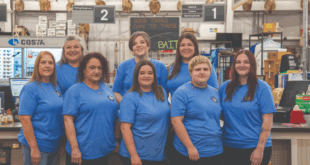When you’re investing time and money in marketing initiatives, you want to make sure your efforts actually reach your audience.
There are a few simple ways to track the various messages you send to your customers in order to gauge what’s most (and least) effective. Below are some tips for tracking your marketing efforts from communications and social media expert, Meag Shaffer, the executive vice president of social media for public relations and social media firm Kel & Partners.
Test a Coupon Campaign
If you’d like to compare your customers’ responses to email, social media and direct mail, consider a coupon campaign.
“You can build a coupon and send it out by email, post it on social media and send it as a direct mail piece,” Shaffer says. “If you put a different redemption code on each, you’ll be able to see which of the three coupons is redeemed most.”
This tactic is also useful for tracking direct mail on its own. For example, if you’re including a different area of town in your mail marketing campaign, use a different coupon code for each segment.
Check Email Metrics
When it comes to email marketing, there are several analytics you can pay attention to in order to determine what changes you need to make to increase engagement.
“For email marketing campaigns, there are many elements you can track,” Shaffer says. “Two of the most foundational elements are opens and link clicks, but you can also use A/B testing to track things like subject line effectiveness and the best time of day to send emails.”
A/B testing is a method for comparing two versions of an email that have the same message, but have slight differences. For example, if you’re using A/B testing to determine what time of day is better to send an email, you would send the same email to part of your contacts at one time and the other part of your contacts at another time to see which group has a higher response rate.
Pay Attention to Social Media Engagement
When it comes to social media, the most important metric is impressions, which tells you how many people see your posts. Additionally, you can also easily track metrics like link clicks, likes, comments and more. Check out our Social Media Toolkit to download a tracking template and more.
“Social media is an awareness generator, and it’s a tool you can use for building relationships with your customers,” Shaffer says. “If someone comes in for a paint scraper and they have a pleasant experience and are encouraged to check out a paint-related how-to video on your Facebook page, they become engaged. Then, maybe down the road they’ll see something else on your page that inspires them, eventually bringing them back to the store for more supplies. It doesn’t always deliver a direct response, but social media builds brand awareness over time.”
Review Website Analytics
Regularly review your website analytics to determine how many visitors you’re getting to your website and what landing pages are the most popular. For example, if more people are visiting your “about us” page than your blog or how-to articles, you may want to consider new ways to drive traffic to your company’s blog, such as adding a link at the bottom of your marketing emails.
Additionally, tracking trends in the number of visits to your websites is another way to gauge your marketing efforts. For example, if you notice a spike in web traffic the same week you mailed a circular, you can assume a correlation.
Engage Your Staff
According to Shaffer, one of the easiest ways to track your marketing efforts is to train your sales staff to ask customers how they heard about your business, a specific promotion or sale, and track their responses at checkout. One way to get your employees into the habit of asking is to develop a contest among cashiers to get them excited. For example, you could offer a prize to the employee who tracks the most customer comments within a month.
 Hardware Retailing The Industry's Source for Insights and Information
Hardware Retailing The Industry's Source for Insights and Information






